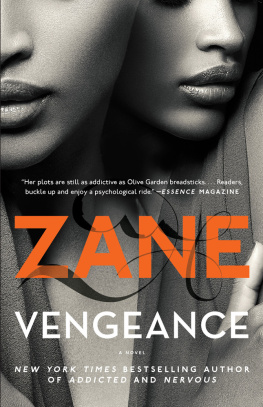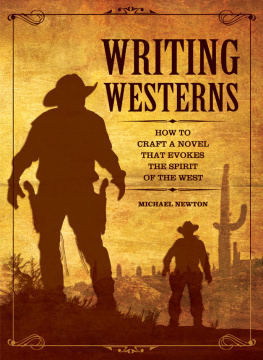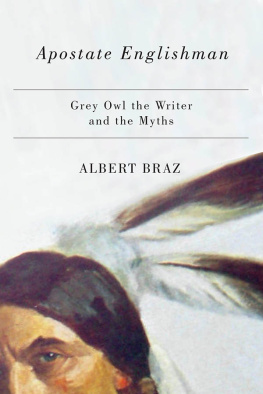Biography of Zane Grey
Biography of Zane Grey
I.
Biography of Zane Grey
Introduction
The concept of a professional writeras we understand it todayhas existed for only about a hundred years. Sure, there were people who made money writing books and articles prior to this, but most of the time these people did not consider writing their main source of income nor their job. They considered themselves artists or thought of their writing as a hobby. One of the best ways to become known as a writer in the United States in the 1920s and 1930s was to have your name appear on the cover of a formula western novel. Formula westerners were extremely popular during this time.
Writers such as Zane Grey, Max Brand, and Earnest Haycox enjoyed this status for work that appeared in a wide variety of magazine and book publications, work that managed to find its way into the most remote corners of American life. Grey, Faust, and Haycox were well-paid too, of course, by the standards of the day, and as Christine Bold reports in her book examining the publishing history of the formula western, Selling the Wild West , Grey became famous as one of the first Americans to earn $1 million by writing.
Grey achieved this milestone during a career that included the production of over 50 novels, nine of which became top ten best-sellers. Grey stood above the rest of the field, as both his economic success and prominent position in the American imagination indicate. However, his contemporaries and successors still attempted to put their stamp on the sub-genre and they continued to profit from its popularity.
Grey also wrote many books and articles about hunting and fishing, and was nothing if not prolific. Yet, his contributions to the formula western sub-genre are responsible for the fame he still enjoys to this day. For many people, Grey is the prototypical western writer, the sub-genres Shakespeare, if you will, and his books continue to be published and read in great numbers to this day.
Changes in the reading habits of the American public, the ongoing shaping of a national literature, the instability of the national identity during this period between World War I and World War II, all contributed to the formula western sub-genres spectacular popularity during the 1920s and 1930s. It was a golden age for the written western to be rivaled only by a golden age for the movie western some twenty years later.
Zane Grey himself understood the connection between this golden age for the formula western and the search for a new national mythos after World War I. He thought of the rugged individualism that he practiced as a particularly American way of life. The closing of the frontier, and the conclusion of the shooting war between Native Americans and the American military contributed to the initial success of the formula western sub-genre just before and just after the end of the 19th century. However, it took the search for a new national mythos to push the sub-genre over the hump and into popularity.
Grey provided a way for Americans to think about themselves, and the heroes of his novels spawned entire cultural movements in terms of mens fashion, advertising, and the love of the outdoors. The famous Marlboro Man and all the images that go along with it are still a staple of the American advertising industry, and the discourse of the formula western still resonates in American politics. After all, it wasnt so long ago that President Regan was parading around as a cowboy, before leading the free world.
At the time that Zane Greys novels were topping the publishing charts the nation was pining for the set of images that later would be packaged as the Marlboro Man. These images, circulated to great masses of people on the pages of formula western novels and by other means, did not disappoint. They satisfied the need of the American reading public for a rejuvenation of the project of defining a national identity, and the result was that the formula western hero became one important model for what is sometimes referred to as the national character.
The Formula Western Novel
The term formula in the phrase formula western novel, refers to the actual verbal instructions (sometimes written down, sometimes not) communicated from one individual to another. These instructions carried with them the formalizing authority of the publishing industry when they were given as part of the routine communication between publisher/editor and writer. Other times they were given as if outside this authority, when they were part of the informal discussion between reader and reader. Even today, there is a small, but intense, market for formula western novels. The people who make up this market communicate with each other in very specific ways. As the king of the sub-genre, Zane Grey is held in high esteem among these fans. If a recently written formula western strays too far away from the model that Grey helped to establish, this reading community will likely reject it.
To fully understand how formula western novels came to be so popular during Greys era, we have to understand certain characteristics of the American publishing industry and its attitude toward the western United States in general, and western region literature in particular. Publishers were more likely to rush formula western stories and novels to press fearing that the wild west would pass out of the public imagination.
Although the closing of the American frontier is widely perceived to have occurred at the end of the 19th century, the publishing industry saw the writing on the wall and began capitalizing on the growing nostalgia for westerns as early as the 1860s. When the closing actually did take place, publishers were positioned to increase their production and were able to feed the American fascination.
This publishing regime participated heavily in the construction of the formula western through iron-fisted control production guidelines of the fiction. But, you cant understand Greys wild popularity and the publishing industrys role in his popularity unless you understand how his predecessors worked.
First, there was the dime novel. From 1890 to 1910, dime novels were cheaply produced paperbacks that included a single complete narrative. Then came the mass marketed pulp and slick magazines. These were paper magazines printed from 1910 to 1920 and beyond. Finally, the hard back novels in the 1920s and 1930s made Grey his fortune.
The publishers took advantage of the authority of labeling some writers professional writers, completely separate from the journalist, and established restrictive working conditions with little participation from psuedo-writers.
Author autonomy was negligible and deadlines were severe. The ideology of the publishing is present in the dime novels planning and development and in the content of the story itself. As a result of this highly uneven distribution of power to individuals mainly interested in the economic bottom line, the formula for the content of a successful dime novel was stripped down to a small set of rules and guidelines. Certain features of the setting and character line-up, for instance, had to be instantly recognizable, produced within a narrow range of variability.
Writers of western dime-novels had to submit to very intrusive editing rounds in anticipation of producing the right looking landscapes. This included the requisite number of mesas and buttes, sunsets and sunrises. If writers did not submit to this intrusive editing, they were replaced. Publishers delivered explicit instructions about the details of even minor characters, whose ways of speaking and sketchy histories were necessary to provide that whiff of exoticism so important to providing an escape from everyday life.
In a long 1896 letter from Street and Smith publishing house to writer Gilbert Patten, the publisher goes so far as to suggest even the ethnicities of these minor characters. It would be an advantage to the series, writes Ormond Smith, to have introduced the Dutchman, the Negro, the Irishman, and any other dialect that you are familiar with.







